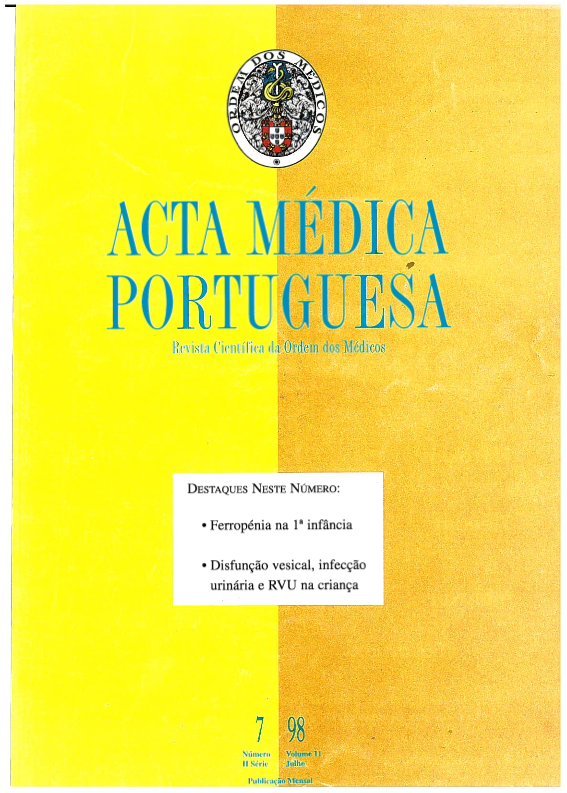Importância do índice neurobiológico de J. Brazy. Predicção do número e gravidade de sequelas dos recém nascidos de muito baixo peso.
DOI:
https://doi.org/10.20344/amp.2309Resumo
The objective of this study was to evaluate the neurodevelopment outcome of Very-Low-Birth-Weight Infants (VLBW), between 1987 and 1993, and correlate these findings with J.Brazy's Neurobiologic Risk Score (NBRS). The minimum corrected age at follow-up was 12 months. The neurodevelopmental assessment was performed using Mary Sheridan and Ruth Griffiths scales, Auditory and Visual Brainstem Evoked Responses and Stycar test. The NBRS was applied to 77 children. According to the score, three groups of risk were defined: Low < or = 4; Intermediate 5-7; High > or = 8. We obtained the following results: children with NBRS < 4, 20% had handicaps (5% of which major); children with NBRS 5-7, 41% had handicaps (23% of which major); in children with NBRS > 8, 95% had handicaps (80% of which major). The incidence of handicaps, (all grades included) was 71.4% for those weighing less than 1000 gr at birth, and 39.2% for those weighing 1000-1499 gr at birth. Major handicaps, mainly motor deficits, occurred in 26.8% of VLBW infants and minor to moderate handicaps were observed in 18.3% of patients in this group. These results were compared to J.Brazy's originals. We concluded that the NBRS, which is simple and objective to perform, is a good predictor of subsquent abnormal development in VLBW infants, allowing the infant's integration as soon as possible in high-risk follow-up programs, to place as soon as possible.Downloads
Downloads
Como Citar
Edição
Secção
Licença
Todos os artigos publicados na AMP são de acesso aberto e cumprem os requisitos das agências de financiamento ou instituições académicas. Relativamente à utilização por terceiros a AMP rege-se pelos termos da licença Creative Commons ‘Atribuição – Uso Não-Comercial – (CC-BY-NC)’.
É da responsabilidade do autor obter permissão para reproduzir figuras, tabelas, etc., de outras publicações. Após a aceitação de um artigo, os autores serão convidados a preencher uma “Declaração de Responsabilidade Autoral e Partilha de Direitos de Autor “(http://www.actamedicaportuguesa.com/info/AMP-NormasPublicacao.pdf) e a “Declaração de Potenciais Conflitos de Interesse” (http://www.icmje.org/conflicts-of-interest) do ICMJE. Será enviado um e-mail ao autor correspondente, confirmando a receção do manuscrito.
Após a publicação, os autores ficam autorizados a disponibilizar os seus artigos em repositórios das suas instituições de origem, desde que mencionem sempre onde foram publicados e de acordo com a licença Creative Commons









